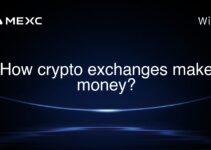Solana operates on its own independent blockchain, known as the Solana blockchain. This high-performance blockchain is designed for speed and scalability, utilizing a unique consensus mechanism combining proof-of-stake (PoS) with proof-of-history (PoH) to process transactions quickly and securely.
Importance of Understanding Solana’s Blockchain
For investors, traders, and users, understanding that Solana is on its own blockchain is crucial for several reasons. Firstly, it influences the decision-making process regarding investments, as the technical foundation and governance of a blockchain can significantly impact the asset’s value and stability. Secondly, developers looking to build decentralized applications (dApps) need to know the underlying technology to effectively utilize its features and capabilities. Lastly, users of these applications benefit from understanding the security, transaction speed, and overall network health, which directly affects usability and trust in the ecosystem.
Real-World Examples and 2025 Insights
Adoption in Decentralized Finance (DeFi)
As of 2025, Solana has become a prominent player in the DeFi space. Platforms like Serum, a decentralized exchange (DEX) built on Solana, leverage the blockchain’s high throughput and low latency to offer near-instantaneous trades and minimal transaction fees. This capability has attracted a significant volume of global trading activity, positioning Solana as a competitive environment for financial innovations.
Expansion in Non-Fungible Tokens (NFTs)
The NFT market on Solana has seen exponential growth, with platforms like Metaplex enabling creators to mint and market NFTs efficiently. The blockchain’s ability to handle large volumes of transactions at lower costs has made it an attractive option for NFT artists and collectors, fostering a vibrant ecosystem of digital art and collectibles.
Integration with Enterprise Solutions
Major enterprises have started integrating Solana into their operations by 2025. For example, telecommunications giants have utilized Solana’s blockchain for secure and scalable IoT (Internet of Things) applications, benefiting from its high-speed transaction capabilities and enhanced security features.
Relevant Data and Statistics
By 2025, Solana has processed over 50 billion transactions, with an average block time of 400 milliseconds and a throughput of 65,000 transactions per second (TPS). These metrics not only demonstrate the blockchain’s capacity but also its appeal as one of the fastest networks in the cryptocurrency space. Furthermore, the network has attracted over 4000 active validators, enhancing its decentralization and security.
Conclusion and Key Takeaways
Solana’s blockchain stands out in the cryptocurrency landscape due to its unique combination of proof-of-stake and proof-of-history consensus mechanisms, which enable high throughput and low latency. This technical foundation has facilitated significant adoption and growth in areas like DeFi, NFTs, and enterprise solutions. For investors, understanding the robust and scalable nature of Solana’s blockchain is essential for making informed decisions. Traders benefit from the fast and cost-effective transaction environment, while developers and users enjoy a stable and secure platform for building and using decentralized applications. As Solana continues to evolve and expand its ecosystem, it remains a critical player in the broader blockchain and cryptocurrency sectors.
Overall, the Solana blockchain is not just a technological innovation; it is a thriving ecosystem that supports a wide range of applications and continues to push the boundaries of what decentralized networks can achieve.



